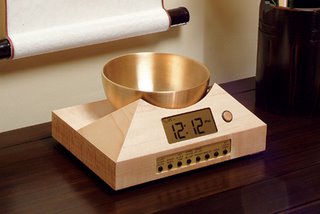
Yoga injuries
These herbs help heal and prevent common yoga injuries.
By James Bailey, L.Ac., M.P.H.
In my early 30s I began to experience a greater sensitivity in my joints during my yoga practice, which culminated in three injuries in one year. Being an herbalist and a devoted yoga practitioner, naturally I explored using herbs both internally and topically. After some experimenting, I found I could minimize cycles of stiffness and pain after class and even prevent reinjury.
Injuries caused by a hatha yoga practice are usually minor and limited to simple ligament sprains and muscle strains, with the occasional slip, fall, or forced adjustment. The most common injuries are caused by repetitive isometric strain or overstretching and occur at the wrists, shoulders, neck, along the spine, and at the sacroiliac joint, hamstrings, and knees. If not addressed, these minor setbacks can have a long-term impact on the balance of alignment within the practice. Some yogis even bring ailments to the mat, which can also have lifelong effects upon range of motion, breathing, supply of energy, and quality of meditation.
There are two botanical approaches to injury care. In the trauma phase, when an injury first occurs, herbs should be used both internally and topically to relieve acute pain and inflammation. Then in the recovery phase introduce herbs to nourish and strengthen the joints and soft tissues. When an injury first occurs, simple strains and sprains require herbal compounds that improve the circulation of prana (life force) and blood in and around the injury. Even minor trauma can have the undesired effect of reduced local circulation, pain, swelling, and inflammation. Topical applications target the traumatized area directly. The active constituents of the topical herbs are absorbed through the skin for a more immediate and targeted effect.
Among a large class of generic analgesic and anti-inflammatory substances, a few Ayurvedicclassics stand out. Salai guggul, Kapitthaparni, and Bola are three related plant sap resins used internally and topically to reduce pain, strengthen bones and joints, and cleanse the blood of toxins that accumulate around injury sites.
White willow is a Native American remedy and natural source of salicylic acid, the forerunner of aspirin, but without the blood-thinning and stomach-irritating side effects. It also improves mobility in sore or creaky joints. Notoginseng, a relative of Panax ginseng, is known for its analgesic effects on injuries. It is used throughout Asia to improve circulation and support the adrenal glands in the production of inflammation-reducing corticosteroids.
Once the pain subsides, it is important to introduce herbs that rejuvenate and strengthen joints and soft tissues. These herbs do not remedy the acute, aggravated phase of the injury but instead strengthen the integrity of the tissues and support a more complete recovery. They also are ideal for yoga practitioners who have ongoing vulnerabilities in the joints.
For the later stage of injury recovery, use herbs that supply a natural plant source of collagen and silica, both important for rebuilding soft tissue. Eucommia, a renewable tree bark, supplies plant collagen directly to the damaged area and also can be safely used as a long-term joint supplement for both injury recovery and prevention. Eucommia is traditionally believed to strengthen a weak lower back and knees; it also protects the lumbar spine and sacrum in backbending and hip-opening postures, and the knees in postures like Padmasana (Lotus Pose) and Virasana (Hero Pose). Horsetail, a reedlike plant, contains large amounts of natural silica, which speeds the repair and regeneration of connective tissue, thus improving its strength and elasticity.
but without the blood-thinning and stomach-irritating side effects. It also improves mobility in sore or creaky joints. Notoginseng, a relative of Panax ginseng, is known for its analgesic effects on injuries. It is used throughout Asia to improve circulation and support the adrenal glands in the production of inflammation-reducing corticosteroids.
Once the pain subsides, it is important to introduce herbs that rejuvenate and strengthen joints and soft tissues. These herbs do not remedy the acute, aggravated phase of the injury but instead strengthen the integrity of the tissues and support a more complete recovery. They also are ideal remedies is meant to complement the conventional wisdom of resting and icing. Of course, for serious injuries or those that do not improve within 72 hours, a professional health-care provider should be consulted.
James Bailey, L.Ac., M.P.H., Herbalist AHG, practices Ayurveda, Oriental Medicine, acupuncture, herbal medicine, and vinyasa yoga in Santa Monica, California.

timers for yoga
Now & Zen, Inc.
1638 Pearl St.
Boulder, CO 80302
(800) 779-6383
adapted from Yoga Journal.com
Posted in yoga, Yoga Timer, Yoga Timers by Now & Zen